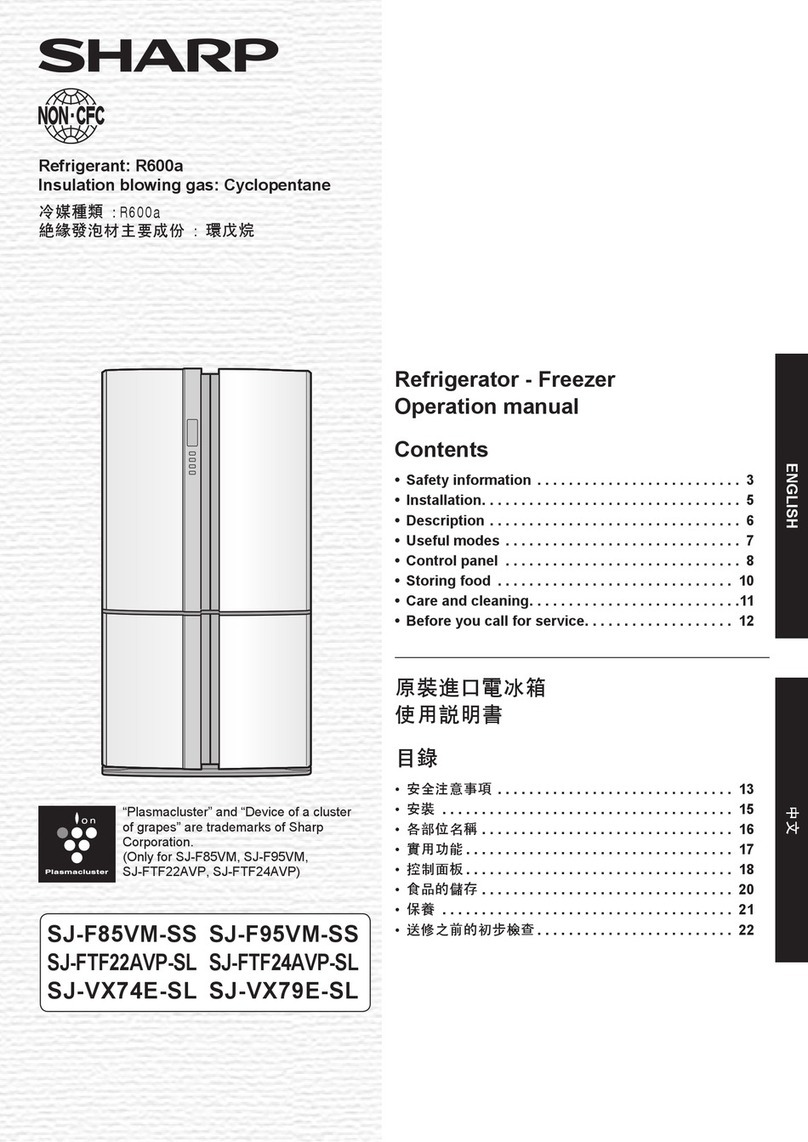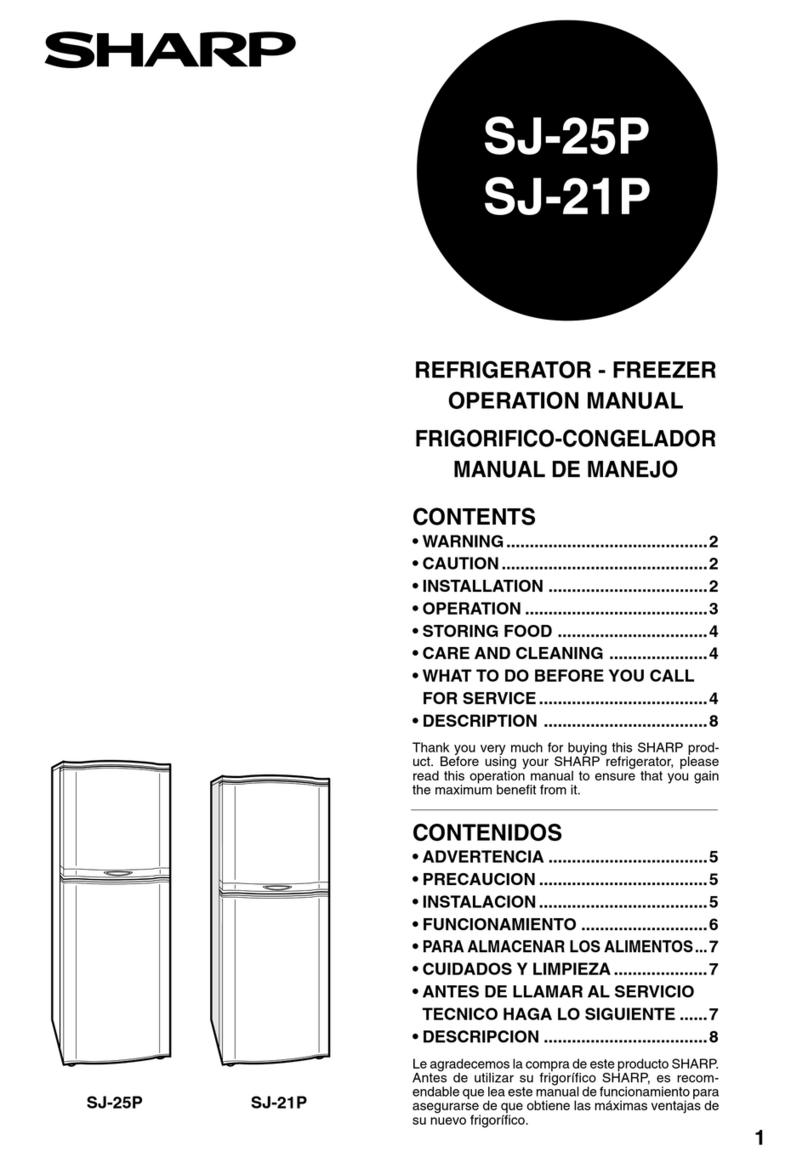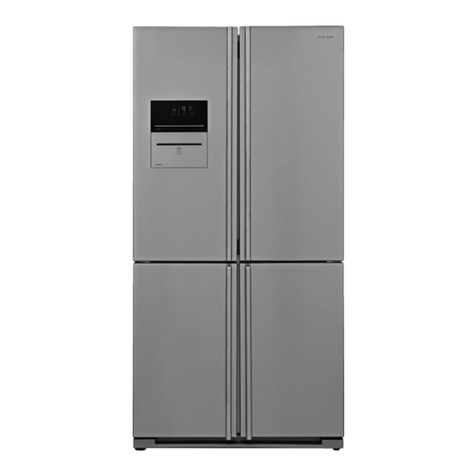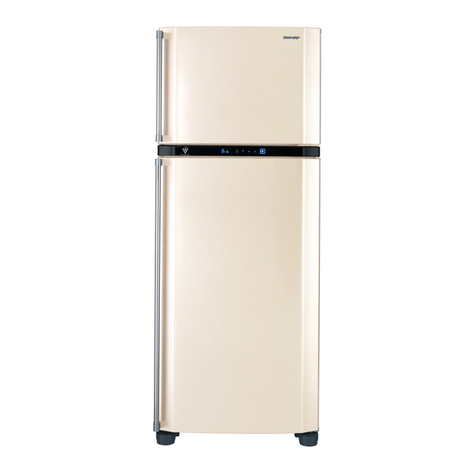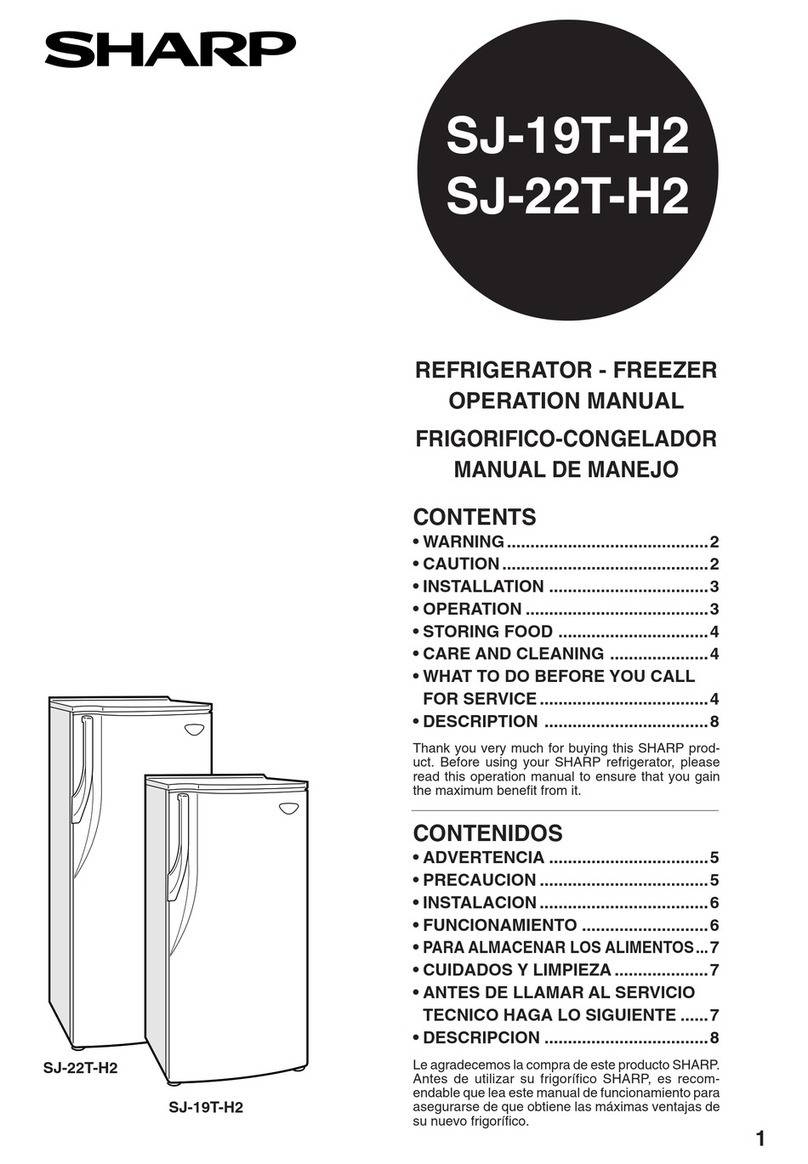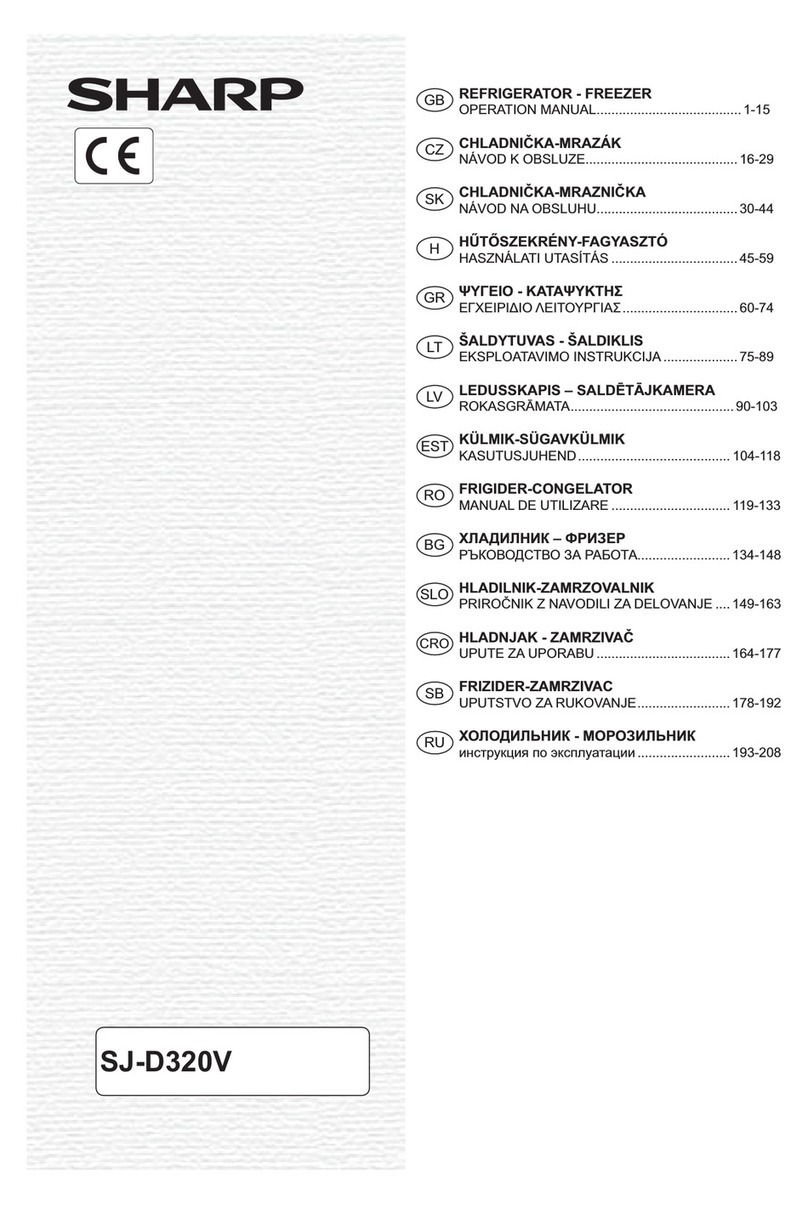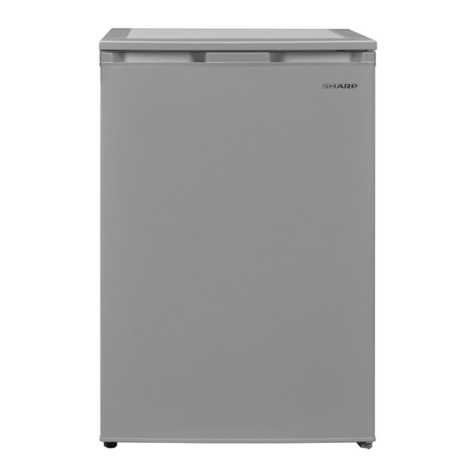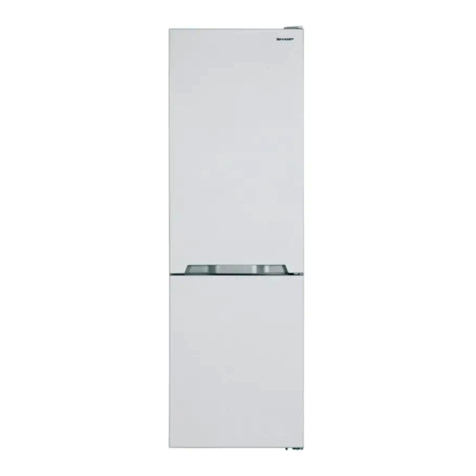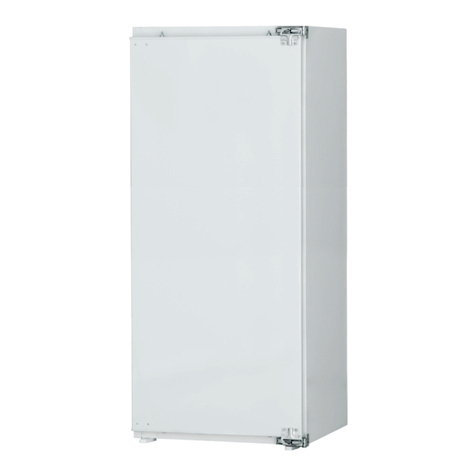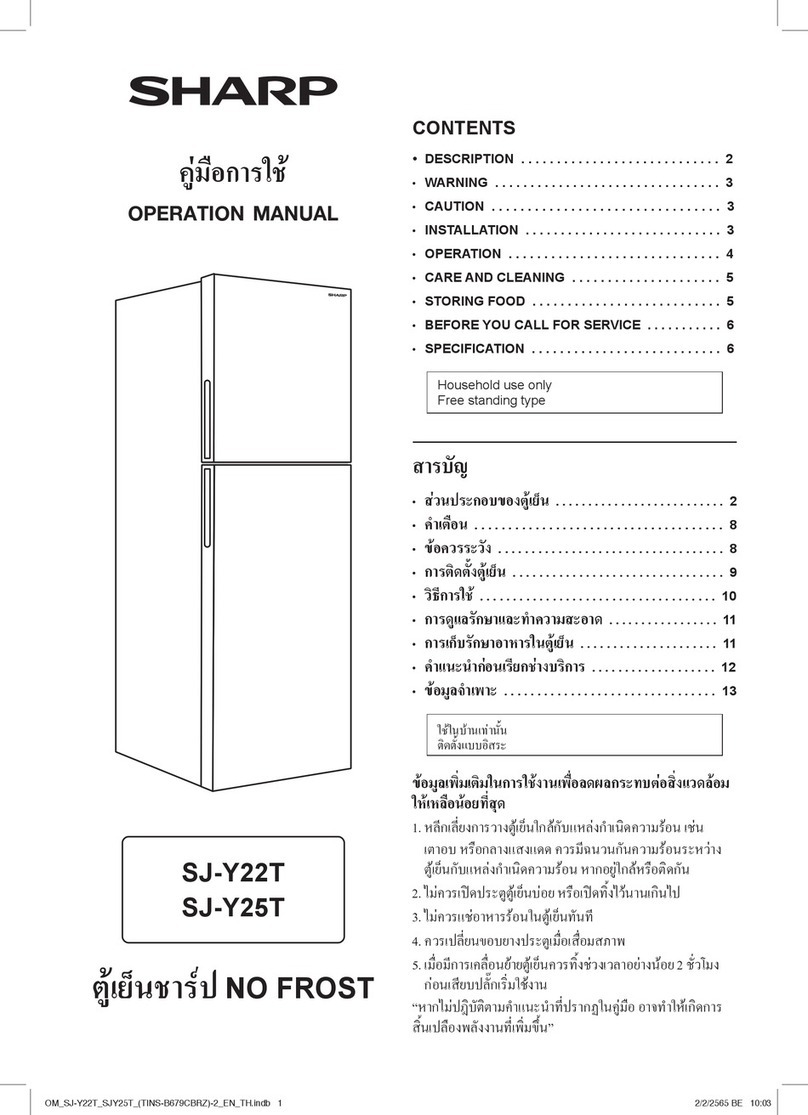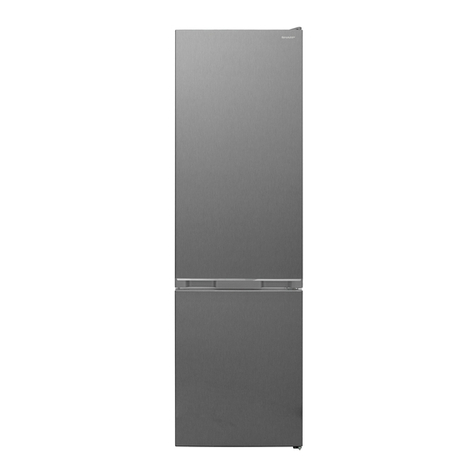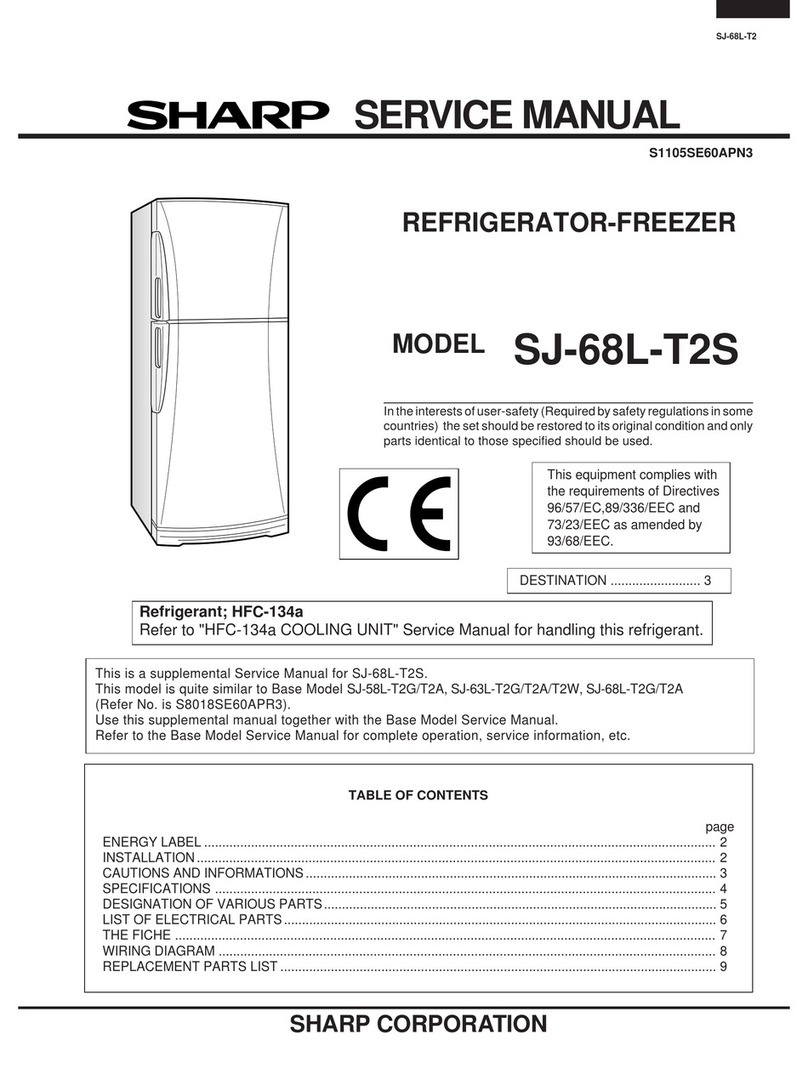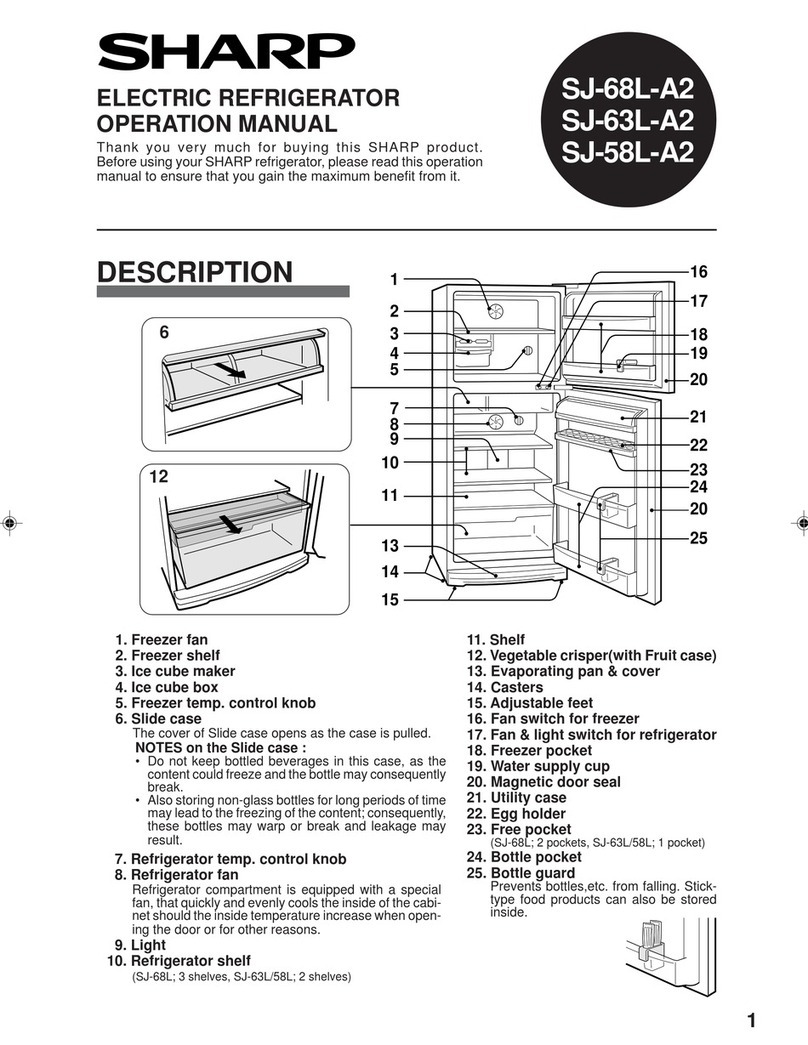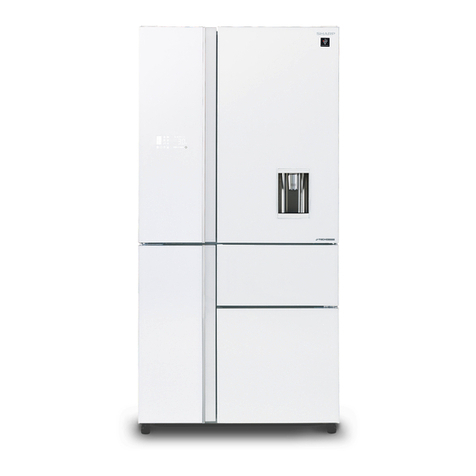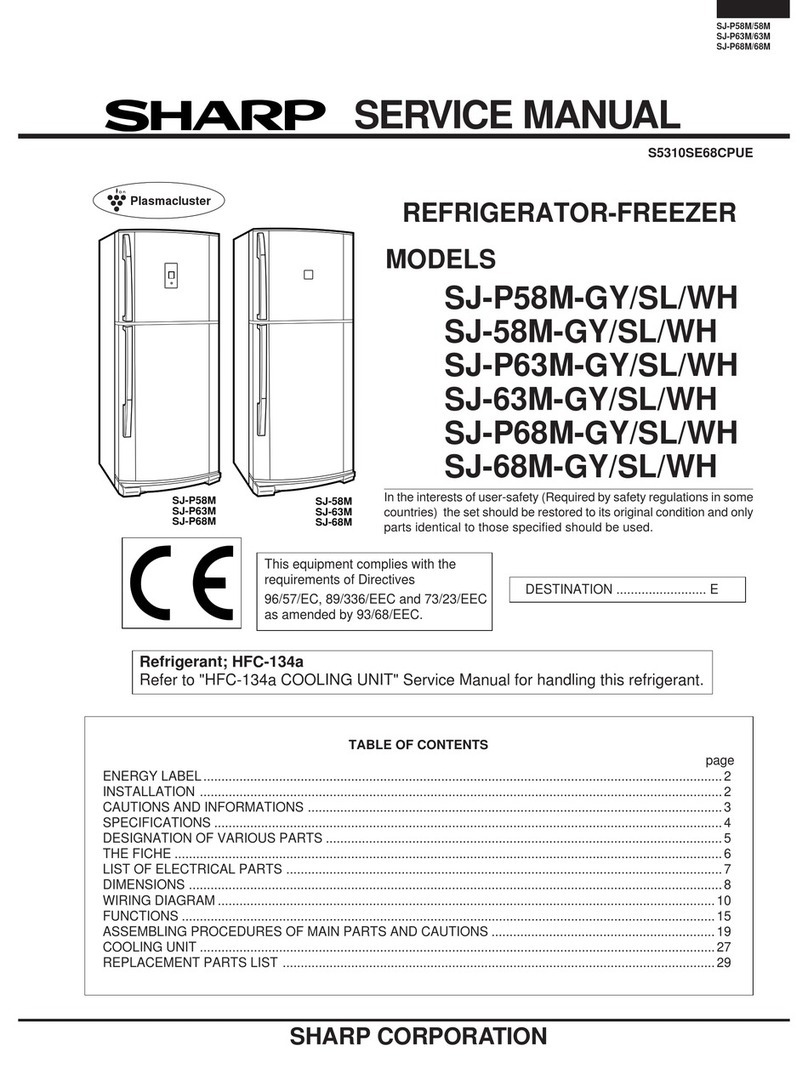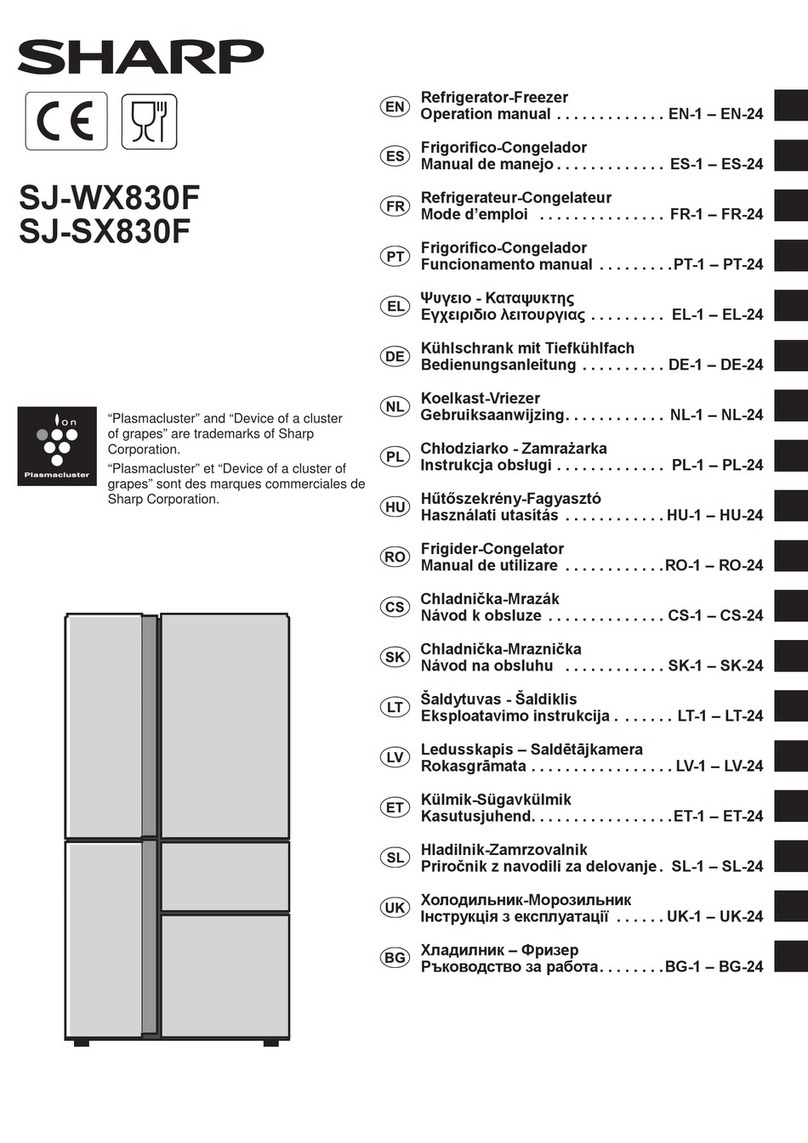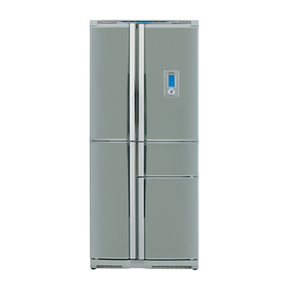
2
WARNING
1. This refrigerator is airtight. TO PREVENT FA-
TAL ACCIDENTS TO CHILDREN, please com-
pletely remove the door prior to discarding the
refrigerator.
2. Highly volatile and inflammable materials such
as ether, petrol, propane gas, adhesive agents
and pure alcohol etc. are liable to explode. Do
not store these materials in the refrigerator.
3. To prevent damage to the outer cabinet, avoid
contact with lacquer, and paint, etc.
4. When cleaning your refrigerator, do not splash
water directly on the outer cabinet or the inte-
rior. This may lead to rusting and deterioration
of the electrical insulation.
5. When cleaning any areas adjacent to electri-
cal components or replacing the lamp bulb,
unplug the refrigerator first to prevent electric
shock.
6. Should electrical components be accidentally
immersed in water, unplug the refrigerator, dry
the parts and contact your nearest service
agent approved by SHARP.
7. When disconnecting the power plug, do not
touch the pin of plug. This may cause electric
shock.
8. This refrigerator is designed solely for the pur-
pose of storing foodstuff for domestic use in
accordance with the instructions given in this
manual. Using the refrigerator for other pur-
poses might be harmful to persons or prop-
erty.
9. This refrigerator is not suitable for the storage
of materials requiring precise temperatures.
Deterioration of these materials will be dan-
gerous.
10. Dust deposited on the power plug may cause
fire. Wipe it off carefully.
11. Do not attempt to change or modify this refrig-
erator. This may result in fire, electric shock or
injury.
12. Information regarding disposal of the ap-
pliance
Flammable insulation blowing gases should be
disposed appropriately. Take the cabinet and
doors to a recycling plant for flammable insu-
lation blowing gases.
CAUTION
1. Do not touch the compressor unit or its pe-
ripheral parts, as they become extremely hot
during operation and the metal edges may
cause injury.
2. If the power supply is accidentally discon-
nected, please wait for at least 6 minutes be-
fore re-connecting the power, as back pres-
sure in the compressor may trip the overload
relay.
3. Avoid removing food from the freezer with your
bare hands. Directly touching products stored
at sub-zero temperatures can result in frost-
bite.
4. To prevent accidental power disconnection,
plug the refrigerator directly to the source. Do
not use a double adaptor as loss of power could
lead to the spoiling of the stored food.
5. Do not place bottles in the freezer as they may
crack when frozen.
6. Keep the door securely closed. If the door is
left ajar, the controlled inner temperature will
rise, resulting in food spoilage and increase in
electricity costs.
7. Do not install the refrigerator in a damp or wet
location as this may cause damage to the in-
sulation and a leak. Condensation may also
build on the outer cabinet and cause rust.
8. When installing or moving the refrigerator,
make sure that you do not nip or kink the power
cord. Damage of the power cord may cause
electric shock or fire.
9. Do not use this refrigerator when the power
cord or plug is damaged, or the outlet attach-
ment is loose, as they may cause electric shock
or fire.
10. Disconnect from the mains electricity supply
by removing the mains plug from the electric-
ity supply socket. Do not remove by pulling the
mains lead. This may cause electric shock or
fire.
11. Make sure that you leave adequate ventilation
space around the refrigerator to prevent the
compressor from overheating and stopping.
Please follow the instructions given for instal-
lation.
